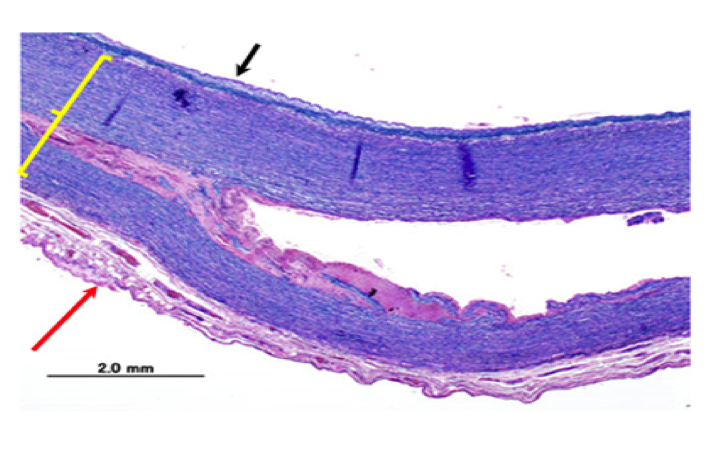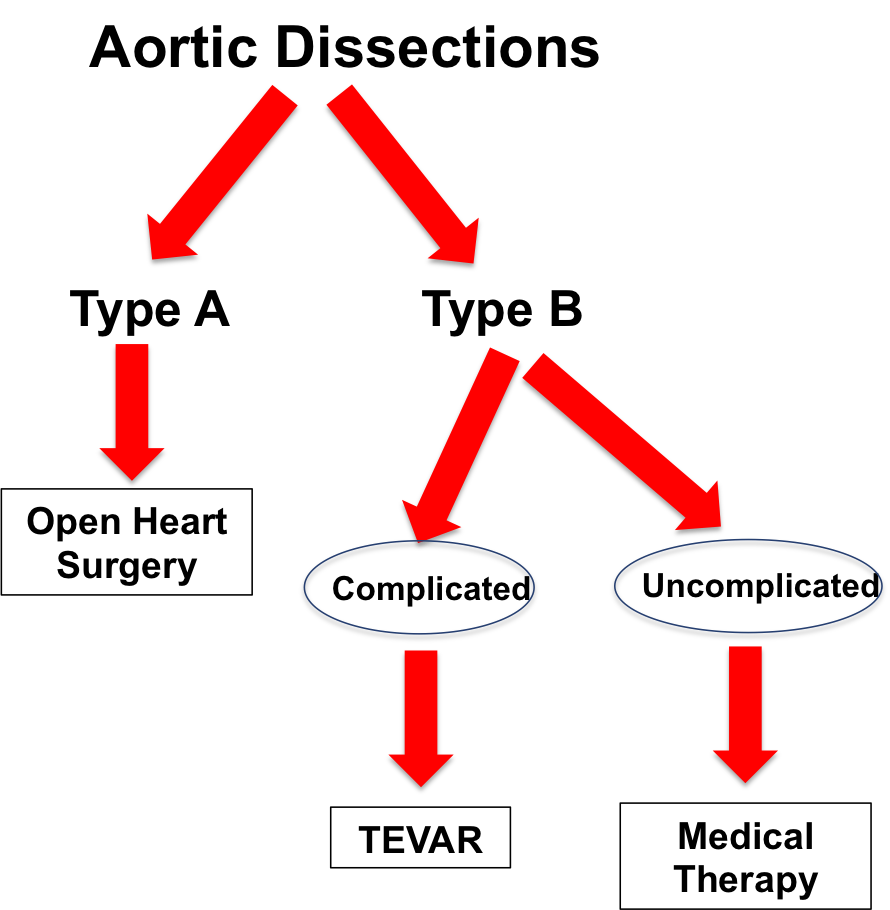What's Your Type?
From the Desk of Dr. Wheatley
Subj: Aortic dissection

The wall of the aorta - the major blood vessel of the body - is composed of several layers which are biologically fused together.
An aortic dissection develops (as we have previously discussed HERE and HERE) when there is a spontaneous tearing apart of the layers of the aorta.
In the womb, embryologically speaking, the aorta forms within the first 28 days of gestation.
It is at the time of earliest development that the cellular components constituting the wall of the aorta (collagen, elastin, etc.) come together to form 3 distinct biologic layers which end up functioning as a cohesive unit.
What we mean by this, is that in cross section, the wall of the aorta macroscopically looks generally uniform.
However, on closer inspection, it becomes evident that the innermost lining of the aorta (endothelium) is a thin layer sitting on top of a more robust foundation of tissue (media). The outmost layer (adventitia) is a wispy network of tissue.
Almost all of the strength of the aortic wall comes from the media layer.
That’s a major reason why dissections can be so deadly - the media is torn apart by blood flowing in the strongest segment of the aortic wall - and the remaining tissue may not be strong enough to withstand the blood pressure.
Ripping and tearing
An aortic dissection starts when the integrity of the endothelium which interfaces with flowing blood becomes compromised.
The localized defect allows blood to penetrate deep into the middle of the aorta and allow blood to flow outside the normal lumen.
The most common classification system for aortic dissections is the Stanford Classification System.
It divides aortic dissections into two types: Type A and Type B.
Treatment of Aortic Dissections
Type A aortic dissections are those dissections where the initial tear (also called the entry tear) is located in the ascending aorta.
Type B aortic dissections are those dissections where the initial tear (also called the entry tear) is located in the descending thoracic aorta beyond the left subclavian artery.

The management of Type A aortic dissection is immediate open heart surgery.
The management of Type B aortic dissection is divided into two subclassifications: complicated and uncomplicated.
Complicated Type B aortic dissections are those patients where the dissection has created a new medical problem, such as uncontrolled high blood pressure, persistent back pain or malperfusion of a blood flow to a branch vessel.
Uncomplicated Type B aortic dissections have evidence of a dissection on CAT scan but there are no effects of the dissection.
Complicated Type B aortic dissections are treated with endovascular aortic stent-grafts (TEVAR or Thoracic Endovascular Aortic Repair), while uncomplicated Type B aortic dissections are managed with medications.
In our next post, we will focus on the “uncomplicated” Type B aortic dissection patients. There is a new and emerging paradigm which subdivides the uncomplicated Type B aortic dissection patients into additional sub-classifications.
Question
Have you or someone you know had treatment for an aortic dissection? If so, how was their aortic dissection managed?
Share your story.
Was this post informative?
Subscribe to my newsletter to learn more about the aorta, its diseases, and how to treat them.
Comments
Share your thoughts below — I try to get back to as many comments as possible.